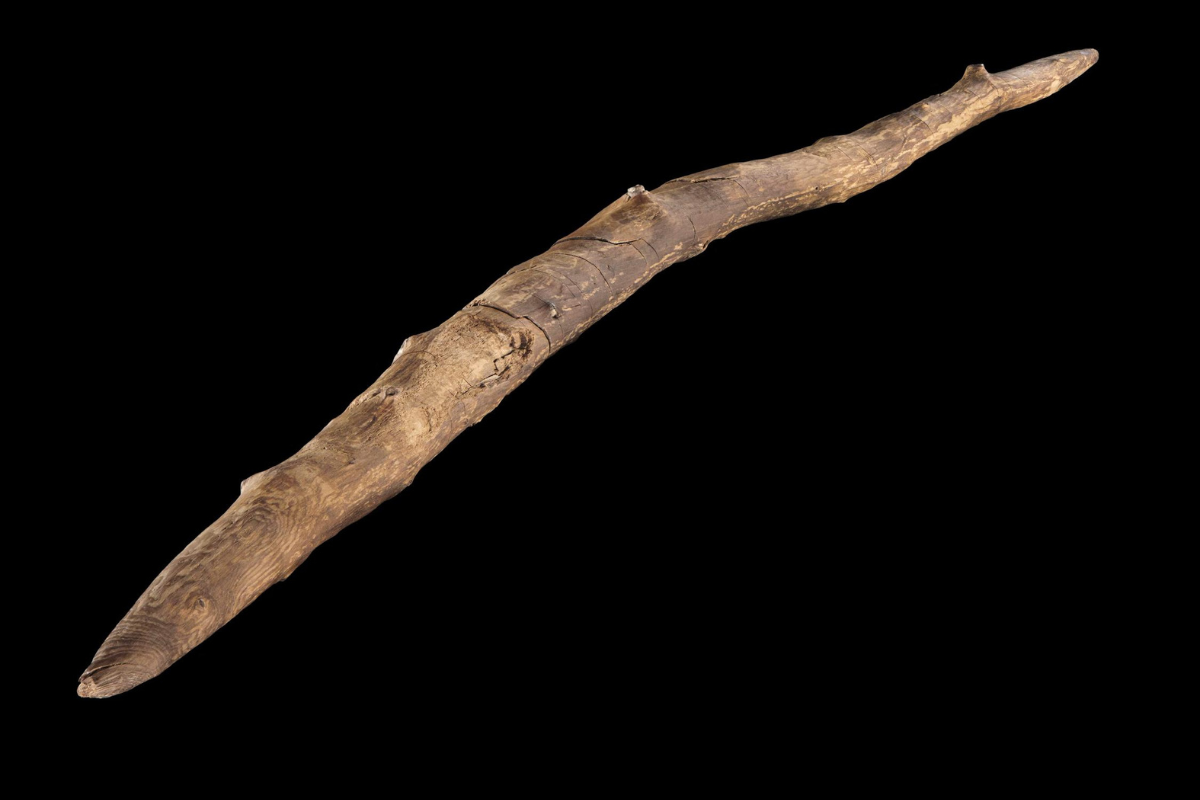A finely crafted hunting weapon produced by an ancient hominid species sheds new light on the surprising woodworking abilities of our extinct ancestors. Analyzing the killing tool using a series of imaging techniques, researchers have revealed how the manufacturer of the 300,000-year-old object selected and treated the raw material before carving and sanding it into an aerodynamic projectile.
The extraordinary item was originally discovered in Germany in 1994 as part of the world-famous Schöningen assemblage, which represents the oldest large-scale record of wooden tools. Dated to more than 300 millennia ago, the collection includes a series of spears that were discovered alongside butchered animal remains, indicating that the site was once a hunting hotspot during the Middle Pleistocene.
In addition to the longer spears, archaeologists also found a pair of short, double-pointed wooden sticks. Initial comparisons with similar weapons used by modern and ancient hunter-gatherers confirmed that these were indeed intended for throwing, although until now, no detailed morphological analysis of the missiles had been conducted.
Taking a closer look at one of the throwing sticks, the authors of a new study reveal how the creator carefully selected a spruce branch of the right shape, before debarking and seasoning the wood. Tool marks also indicate how the item was then expertly worked to create an efficient slaughtering device.

A state-of-the-art Schönigen double-pointed wooden throwing stick made around 300,000 years ago.
Image credit: Volker Minkus
“The thing that really stood out to us as a team was just what woodworking experts humans were 300,000 years ago,” study author Dr Annemieke Milks told IFLScience. “They weren’t just choosing a branch they found on the ground and taking a bit of bark off and then throwing it. This is a sophisticated tool with multiple steps for woodworking to create something aerodynamic, that sits in the hands well, and that would be an effective hunting tool.”
Signs of discoloration and polish on the central part of the shaft indicate where it would have been held and suggest that it was used many times before being lost. According to the researchers, the throwing sticks may have been used to skewer prey from up to 30 meters (98 feet) away, and could have enabled ancient hunters to catch smaller, faster animals than their longer spears.
The diversity of weapons found at Schöningen not only suggests that ancient humans had the cognitive capacity to conceptualize different tools for different functions, but also hints at communal hunts involving adults and children. “These lightweight throwing sticks may have been easier to launch than heavier spears, indicating the potential for the whole community to take part,” explained Milks in a statement. “Such tools could have been used by children while learning to throw and hunt.”
Citing the recent discovery of ancient children’s footprints at Schöningen, Milks told IFLScience that “kids would have made up 50 to 60 percent of these communities, and we know that in societies where hunting is important, children learn to hunt from a very young age.” Ultimately, the researchers can’t say for certain who the weapons were intended for, but Milks says “we felt that it was worth bringing the kids into the picture.”
Perhaps the biggest mystery surrounding the ancient throwing sticks, though, concerns the human species that made them. Given their age, location, and technological sophistication, they could have been created by Neanderthals or the more enigmatic Homo heidelbergensis, although experts are divided over which hominid gets the credit.
“There are no human remains from Schöningen, which is really frustrating,” says Milks. “So it’s hard to say [who made the throwing sticks], which is why we just said, let’s keep it neutral and say “human “.”
“I think as a team we decided to say this is an open question”
The study is published in the journal PLOS ONE.
Source Link: 300,000-Year-Old Hunting Weapon Proves Ancient Humans Were Expert Woodworkers